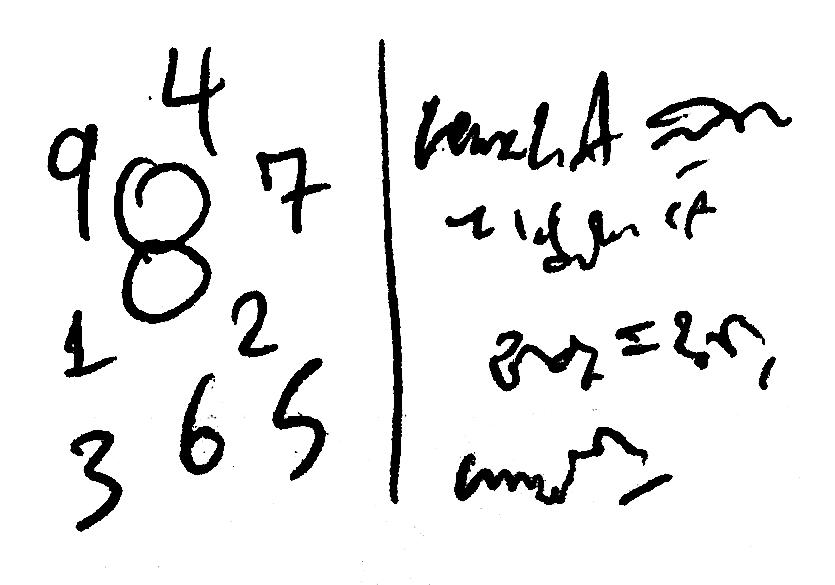Aristotle said that love is one soul inhabiting two bodies. Math is the opposite. Like a failed marriage, math comprises two distinct and irreconcilable entities which share the name "mathematics" with less unity than the Austro-Hungarian Empire at its least cohesive.
When most people think of math, they imagine numbers, shapes, and calculations—what I call "tangible math." These mathematical concepts directly reference and depict reality, and are not too far abstracted from it. When mental calculators and memory athletes battle, they do so over numbers. IQ tests and puzzles also use numbers and pattern-finding extensively. The backbone of tangible math is the number, perhaps a beautiful and curvy 8 or a harsh, delineated 7.
Engineering and science applications, which are practical and problem solving-oriented, use tangible math. So do statistics, geometry, and much of calculus. When I write signal processing papers I stick closely to numbers and data, and what they tell me.
Great. That's math in a nutshell, I'll see you later. Or at least I would've stopped writing if not for one of the most odious misconceptions enshrined in the school system: that not only is math linear, with directionality from easy to hard, but that tangible math naturally yields to the more "sophisticated" and "challenging" realms of what I call "abstract math."
Abstract math is symbolic and functional math: a world of definitions and philosophy, in which concepts are defined in certain ways, but there's no way to make it real. You see—or rather don't see—it in measure theory and group theory, representation theory and other concepts with obscure and confusing definitions, strange names, and impenetrable equations. The backbone of abstract math is the definition, like Lie algebras, Cartan filters, and other theoretical concepts.
The vast majority of math research papers is in here, and few outside the field can understand what is occurring. Abstract math is usually done for its own sake without much application, but it is rigorous nonetheless.
It should be clear that tangible math and abstract math are not only built on separate foundations, but also invite utterly different contexts, i.e. applications and mindsets. Whereas tangible math is observable, grounded on reality, and fundamental to the success of practical operations like campaign management, accounting, and resource allocation, abstract math is a giant thought exercise, an incorporation of convolutions, definitions, and careful diction, mostly isolated to itself or joined with other highly theoretical ventures, like quantum physics.
Tangible math is its own fundamental field. I see the world in terms of numbers, to say the very least1. Numbers are the fabric of our reality. They give our experiences definition, clarity, and purity. But abstract math's definitions, considerations about the existence of certain objects or properties, and need for semantic precision make it much more like reading/language/literature than numerical math. Abstract math is NOT a more difficult version of tangible math or the natural progression thereof; it is a separate world entirely that should be treated more like reading a book than doing mathematics as conventionally understood!
In January 2023 I wrote the hotly-contested "Mathematics, a Premier Art", in which I argued that mathematics was more similar to philosophical fields than the 'lower' 5-sense-reality world of the first three letters in STEM. I do not disagree with or contradict this previous essay. I still believe that tangible math, in all its numerical glory, is expressing a higher consciousness than the machines and contraptions we see around us.
But that essay was not the full story. Math has become a catch-all term for two distinct and dissimilar world perspectives, one of which is wrongly viewed as more difficult and the natural progression of the other. Tangible math is numerical. Abstract math is verbal. Yes, I just used the v-word. Abstract math is closer to literature than numbers. It tests reading comprehension and word-based faculty far more than numeracy. Your ability to read or sit through nutrition-dense papers and lectures and separate the layers of definitions and proofs is a reading exercise, not a numerical one.
Putting tangible math and abstract math under the shared roof called "math" is as strange as grouping a wheel and a trumpet together and giving it a name.
Footnotes
1 See "The Triplex Mindset".
